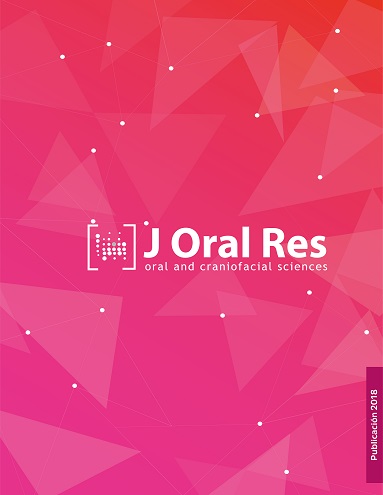Bullying in schoolchildren according to Angle’s classifications of malocclusion.
Abstract
Objective: To compare bullying in schoolchildren according diffe-rent types of Angle’s malocclusion. Materials and methods: A cross-sectional and prospective study was performed. 217 schoolchildren were evaluated. A scale-adapted validated questionnaire was applied to measure general bullying. Malocclusion was classified according to Angle’s classification. Comparison in bullying between different types of malocclusions was performed by Kruskal Wallis non-parametric test. Multiple linear regression analysis was also performed. Results: No statistically significant differences in bullying between the different types of Angle’s malocclusion was found (p=0.295). Multiple linear regression applied to bullying scores treated as dependent variable with malocclusion, sex, and age showed no influence of these variables on bullying (R2=0.0027, p>0.05). Conclusion: Bullying in schoolchildren does not differ according Angle’s classification of malocclusion. Further studies are necessary to emphasize the assessment of bullying related to malocclusion of anterior teeth.
References
2. Moore SE, Norman RE, Suetani S, Thomas HJ, Sly PD, Scott JG. Consequences of bullying victimization in childhood and adolescence: A systematic review and meta-analysis. World J Psychiatry. 2017;7(1):60–76.
3. Bazán-Serrano M, Carruitero MJ. Assessment of general bullying and bullying due to appearance of teeth in a sample of 11-16 year-old Peruvian schoolchildren. J Oral Res. 2017;6(11):287–90.
4. Angle EH. Classification of Malocclusion. The Dental cosmos. 1899;41(3):248–64.
5. Scheffel DL, Jeremias F, Fragelli CM, Dos Santos-Pinto LA, Hebling J, de Oliveira OB Jr. Esthetic dental anomalies as motive for bullying in schoolchildren. Eur J Dent. 2014;8(1):124–8.
6. Kragt L, Dhamo B, Wolvius EB, Ongkosuwito EM. The impact of malocclusions on oral health-related quality of life in children-a systematic review and meta-analysis. Clin Oral Investig. 2016;20(8):1881–94.
7. Al-Bitar ZB, Al-Omari IK, Sonbol HN, Al-Ahmad HT, Cunningham SJ. Bullying among Jordanian schoolchildren, its effects on school performance, and the contribution of general physical and dentofacial features. Am J Orthod Dentofacial Orthop. 2013;144(6):872–8.
8. Amemiya I, Oliveros M, Barrientos A. Factores de riesgo de violencia escolar (bullying) severa en colegios privados de tres zonas de la sierra del Perú An Fac med. 2009;70(4):255–8.
9. Florián-Vargas K, Honores MJ, Bernabé E, Flores-Mir C. Self-esteem in adolescents with Angle Class I, II and III malocclusion in a Peruvian sample. Dental Press J Orthod. 2016;21(2):59–64.
10. Seehra J, Fleming PS, Newton T, DiBiase AT. Bullying in orthodontic patients and its relationship to malocclusion,selfesteem and oral health-related quality of life. J Orthod. 2011;38(4):247–56.
Keywords
This is an open-access article distributed under the terms of the Creative Commons Attribution License (CC BY 4.0). The use, distribution or reproduction in other forums is permitted, provided the original author(s) and the copyright owner(s) are credited and that the original publication in this journal is cited, in accordance with accepted academic practice. No use, distribution or reproduction is permitted which does not comply with these terms. © 2024.











